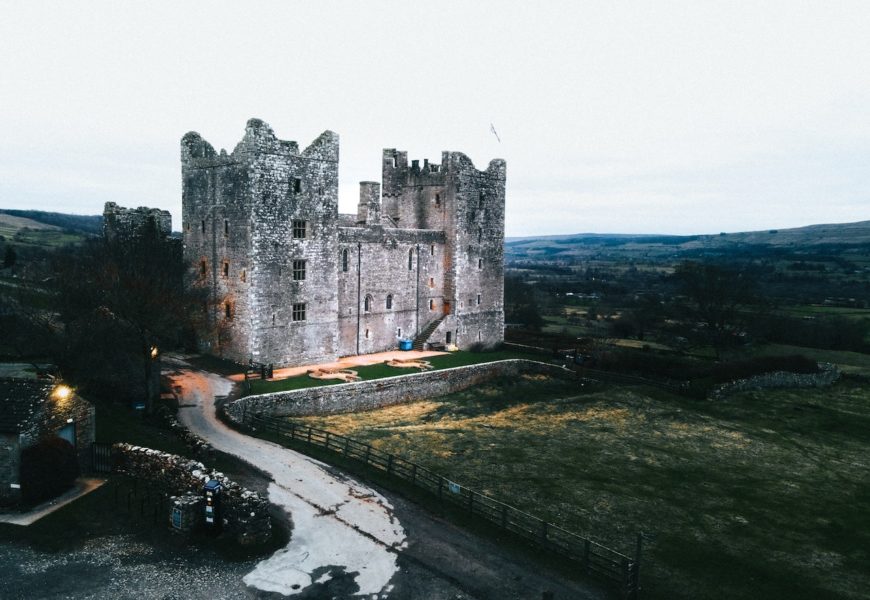You travel across an unbroken plain, flat as a tabletop. In the distance, against an empty sky, stands a squat box-like structure, sitting in isolation. The walls, perhaps made of heavy stone block, are the color of slate, much like the walls of the castle depicted above. As you travel on, turreted towers become visible at each corner. Closer still, you notice that between the tooth-like projections that run along the tops of the walls, stand human shapes and silhouettes, peering out at you. Some of these barely visible figures are armed.
Clearly meant to defend, this is obviously a fortress.
Of the many kinds of structures that humans have erected, none is more hostile, more unfriendly, than the fortress. There is no warm inviting air here, like what we might find at a roadside inn or a small farm holding or any of the other buildings scattered across the kingdom at the time the castle, pictured above, was built.
Instead, the intent of the fortress is to protect from a danger that lies outside the walls, perhaps from the hostile army of a neighboring baron, or a marauding band afire with hopes of easy pillage and plunder.
Hundreds of years later in America fortresses are still with us, but today these protective structures exist in the mind and heart, not in the physical world. Our enemies are no longer the armies of alien powers, or bands of wild and reckless souls searching the world for easy prey. Today, the enemy carries the banner for a political party we oppose, serves a cause that we fear, or believes in a religion we hate. Many of us have responded to these dangers by fleeing behind metaphorical walls of stone.
It’s no surprise that the phrase “fortress-like mentality” is used to describe thinking driven primarily by hostility and fear.
Authors who put our social and cultural lives under the microscope, like Robert Talisse, argue that there is more to this than the rising levels of hostility between groups and factions we have all observed. In his book, Overdoing Democracy, he documents how the enmity and suspicion between groups has penetrated beyond the surface, beyond the domain of politics, and worked its way deeply into our society.
We are divided by where we live, what church we go to, indeed whether we go to church at all. Where do we buy groceries – Whole Foods or a big chain? Do we get our coffee at Dunkin’ Donuts or Starbucks? Do we favor a hybrid or a pickup? Do we bicyle to work or do we see this as something only for lefties? Who do we hang out with? Do we ever talk calmly about what divides us, not with our allies, but instead with people on the other side? Or do we get 9ur back up at the mere thought of an opposing belief?
In short, more and more of what used to be our common life is being drawn back behind fortress walls. For those who retreat into this shelter, the world outside is no longer seen as inviting, as a world to explore, a space in which to learn, but instead has become the stalking ground of the dreaded enemy. The open ground, the place where we used to mix and mingle with one another, is becoming increasingly empty.
The greatest tragedy of living in the fortress is that it not only keeps the enemy out, but that it also keeps us locked inside. We’re not made for this kind of life, cowering behind walls of stone, lobbing volleys of hate at our enemies. Aren’t we meant instead to lead a freer existence, to walk among people of many beliefs?
Three questions for us all.
How do we ensure that we aren’t cowering behind fortress walls? If we suspect we have, then how do we break free? And finally, how do those of us still venturing into the wide world, coax those in hiding to break down the barriers that imprison them, and to step out into the open once again?
Suggested Reading
How To Know a Person by David Brooks
Overdoing Democracy by Robert Talisse





